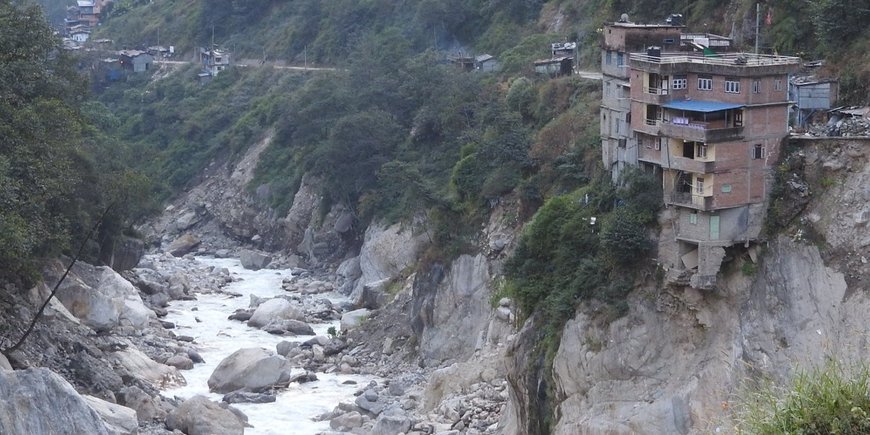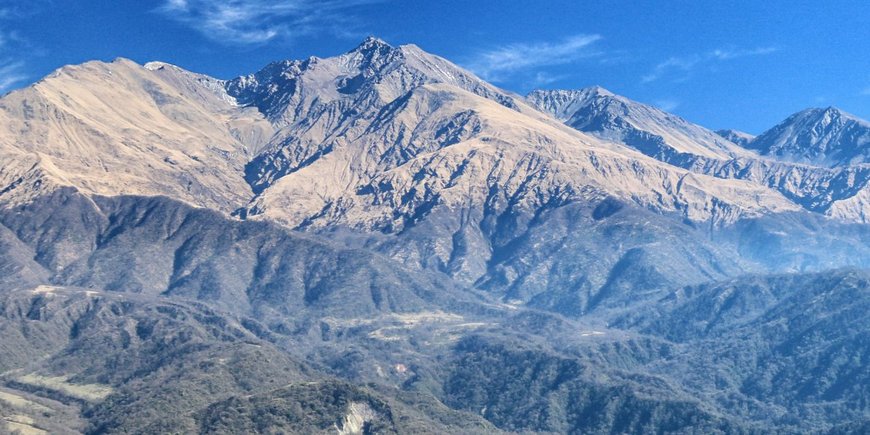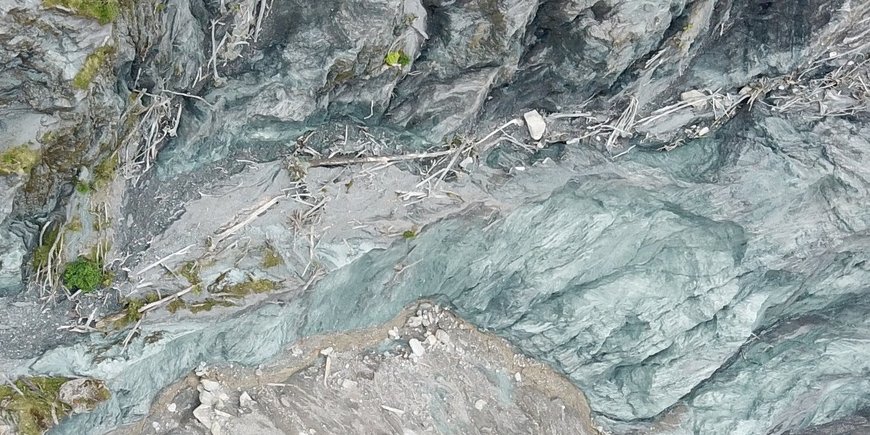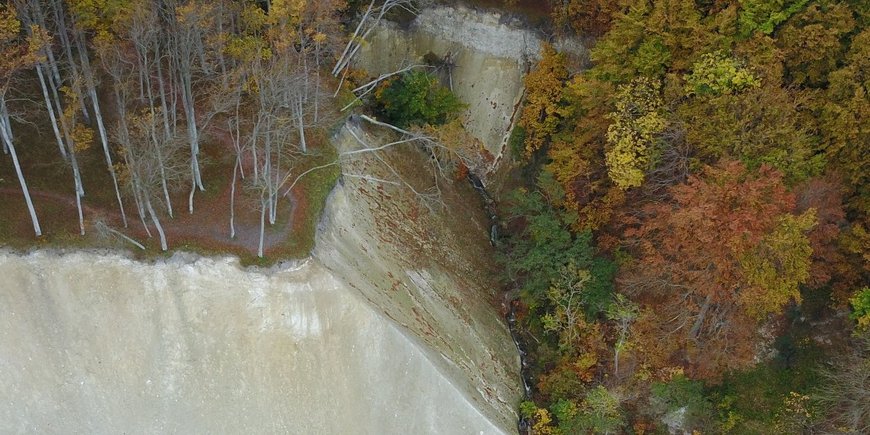Sektion 4.6: Geomorphologie
Forschungsthemen und -strategie
Weil die Dynamik der Erdoberfläche von vielen internen und externen Prozessen und ihren Interaktionen abhängt, ist es wichtig, einen ganzheitlichen Ansatz zu entwickeln. Daher betrachten wir die Geomorphologie in einem umfassenden, multi-disziplinären Rahmen, um diese wichtigen Prozesse auf den entsprechenden räumlichen und zeitlichen Skalen zu erfassen. Wir als Forschungsgruppe widmen fünf Themen besondere Aufmerksamkeit, die viele der oben beschriebenen Herausforderungen angehen. Diese Themen sind wie folgt:
Principal aim: Identify and constrain the mechanisms by which surface processes influence the Earth’s Carbon Cycle.
Description: The erosion-aided geological draw down of CO2 is essential to the long-term relative stability of Earth’s climate that has permitted emergence of life and evolution of complex organisms. Moreover, burial of organic carbon sourced by erosion contributes to the formation of hydrocarbon deposits in predictable locations and quantities. We explore the natural pathways through which CO2 is exchanged between Earth’s atmosphere and geological repositories. Specific areas of emphasis include:
- weathering in surface and subsurface reservoirs,
- biological mediation of rock mass disintegration and weathering,
- transfer of organic carbon to soils,
- the role of soil erosion and landsliding,
- the delivery of organic carbon to geological depocenters, and
- the preservation of organic carbon in geological storage.
An explicit target of our research is to quantitatively constrain the carbon mass budget of active orogenic systems. We also work on the integration of dissolved inorganic and particulate organic carbon fluxes in numerical models of landscape dynamics in order to explore scenarios involving geomorphic, climatic or tectonic change over longer time scales.
Projects:
Principal aims: Constrain the links between geophysical processes such as earthquakes and the geomorphic processes they trigger and revolutionize monitoring of surface processes by application of seismological techniques.
Description: We have developed two major research efforts within this theme. The first focuses on seismically induced erosion, aiming to
- predict patterns of landslides triggered by earthquakes and models of seismic wave propagation;
- invert observed erosion patterns for insights into seismic processes; and
- constrain orogen mass balances on the time scales of entire seismic cycles.
The second focuses on development of a seismological approach to monitoring of geomorphological processes, and its application in studies of process mechanics and landscape evolution. This approach uses the acoustic signals of mass transport at the Earth’s surface to determine the location, timing, magnitude and nature of geomorphic process events. Unlike any other remote sensing technique, it’s high temporal resolution allows us to evaluate geomorphic activity in the context of meteorological conditions. Therefore, it is the key to understanding landscape response to climate change, as well as many other aspects of earth surface dynamics.
Projects:
Principal aim: Determine how climate (precipitation, temperature) and its variability govern the dynamics of Earth surface processes and affect the evolution of landscapes and human habitats.
Description: We use empirical observations and numerical modeling to better understand how surface processes influence hillslopes and river channels, modulate sediment transport, and ultimately shape landscapes. In areas of known climate forcing, we use erosional and depositional records to refine our understanding of the controls on erosion and sediment-transport dynamics, and develop predictive models for how landscapes will respond to changes in forcing. Therein, special attention is paid to the roles of temperature and temperature variations, climate-dependent biological and chemical processes, the periodicity of climate forcing, and tectonic/upper-mantle processes that can further influence landscape evolution.
Projects:
Principal aim: Determine how rapid climate change alters the eco-bio-geomorphic system of a landscape.
Description: We use terrestrial sedimentary archives, mainly lakes, and (organic) geochemical proxies to extract information about landscape and ecosystem change during periods of past abrupt climate change. We reconstruct change during past abrupt transitions in the climate system, such as glacial-interglacial transitions, past warm periods (MIS 5, MIS11) as well as determine the feedbacks of palaeohydrological change on biogeochemical fluxes. Special attention is paid to the role of hydrological change (precipitation intensity, source and ecosystem evapotranspiration) in triggering changes on the regional spatial scale. Further, we aim to identify how such changes have affected the evolution of human societies during the Holocene and into the Anthropocene.
Projects:
- STEEPclim
- Xinxin's project
- SECCO (EarthShape)

Principal aim: Develop tools and methods that allow for the observation and quantification of matter and solute fluxes on the Earth’s surface.
Description: We develop novel hard- and software tools that allow us to efficiently detect, sample and monitor matter and solute cycling through the atmosphere and the surface geosphere. Based on science-driven needs, our scientists and engineers develop laboratory devices, sampling devices for the field, autonomous monitoring stations and innovative software tools. Together with GFZ's Transfer and Innovation office, we amake these tools available to the scientific community and society through cooperation with administrative agencies (DWD, IAEA) and industrial partners.
Projects:
Obwohl es legitim ist, Forschungsprojekte in nur ein Thema einzubetten, ist es besonders nützlich, die einzelnen Themen miteinander zu verbinden. Konzepte, Randbedingungen, Methoden und Ansätze, die in einem der Themen entwickelt und entdeckt werden, sind unabdingbar, um Fragestellungen in den anderen Themen effektiv angehen zu können. Außerdem wird dadurch sichtbar, wie Themen miteinander verknüpft sind und zusammenwirken. Als Beispiel sei die seismische Beobachtung geomorphischer Aktivität in Gebirgsgebieten genannt. Die seismischen Daten liefern Einsichten in die exakten meteorologischen Bedingungen, die Oberflächenprozesse antreiben. Mit diesem Wissen können die Reaktionen der Erdoberfläche auf den Klimawandel besser vorhergesagt, Risiken, die von Naturgefahren ausgehen, umfassender eingeschätzt und Frühwarnsysteme genauer abgestimmt werden. Darüber hinaus kann man mit solchen seismischen Daten, wenn sie mit Messungen des Sedimenttransports in Flüssen verbunden werden, im Detail betrachten, wie die physikalischen, chemischen und biologischen Prozessen interagieren, die die Bindung von CO2 in geologischen Speichern beeinflussen. Dies gewährt seltene Einblicke in die Rolle, die geomorphologische Prozesse in der Dynamik von Ökosystemen spielen. Die Überlegung, dass es für diese Integration von Forschungsthemen nötig ist verschiedene Problemstellungen parallel zu bearbeiten und eine ganze Reihe von Techniken und Methoden zu nutzen, ist von zentraler Bedeutung für die Forschungsstrategie unserer Gruppe.




